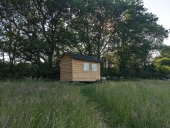















Invasive plants are Earth's way of insisting we notice her medicines. Stephen Herrod Buhner
Everyone learns what works by learning what doesn't work. Stephen Herrod Buhner
 1
1




"People may doubt what you say, but they will believe what you do."
 1
1




Living in Anjou , France,
For the many not for the few
http://www.permies.com/t/80/31583/projects/Permie-Pennies-France#330873




 apart from goat attack
apart from goat attack
Living in Anjou , France,
For the many not for the few
http://www.permies.com/t/80/31583/projects/Permie-Pennies-France#330873
 1
1




Living in Anjou , France,
For the many not for the few
http://www.permies.com/t/80/31583/projects/Permie-Pennies-France#330873
 1
1




 1
1




Let Nature work for you.




 2
2




 2
2




 1
1




Permies is awesome!!!
 1
1




Growing on my small acre in SW USA; Fruit/Nut trees w/ annuals, Chickens, lamb, pigs; rabbits and in-laws onto property soon.
Long term goal - chairmaker, luthier, and stay-at-home farm dad. Check out my music! https://www.youtube.com/@Dustyandtheroadrunners
 2
2




Argue for your limitations and they are yours forever.




 1
1




Growing on my small acre in SW USA; Fruit/Nut trees w/ annuals, Chickens, lamb, pigs; rabbits and in-laws onto property soon.
Long term goal - chairmaker, luthier, and stay-at-home farm dad. Check out my music! https://www.youtube.com/@Dustyandtheroadrunners

|
Something must be done about this. Let's start by reading this tiny ad:
The new gardening playing cards kickstarter is now live!
https://www.kickstarter.com/projects/paulwheaton/garden-cards
|





